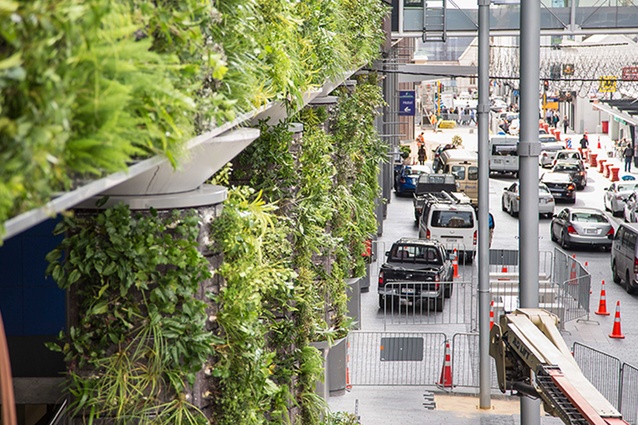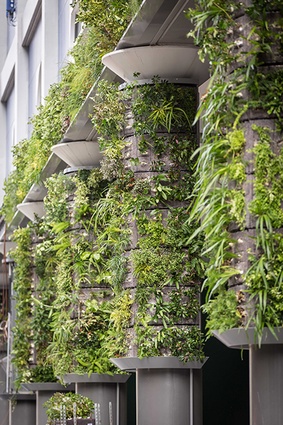Green streets
Central Auckland has just gotten a little greener thanks to a 130m2 living wall lining part of Federal Street in the city.
Conceived by GreenAir, who worked in collaboration with Australian firm Fytogreen and landscape architects Boffa Miskell, the green wall contains 3500 plants, more than 80% of which are New Zealand natives. The installation comprises seven fytowall-wrapped pillars rising to meet a 48m-long living wall above.
The pillar planting was inspired by the under-canopy of the Waitakere Ranges and includes natives such as climbing rata (Metrosideros perforate), Asplenium obtusatum, Microsorum scandens and a variety of Astelias, creating a scenario evocative of the plants that grow up tree trunks in the New Zealand bush.
The selection of plants provided its own challenges, and a lengthy research and development phase preceded the final selection and arrangement of the plant species to ensure the plants would thrive in the location and that hardier species would protect more vulnerable ones.
The result is that not only do the columns look like tree trunks; they’ve been designed to work like them from an ecological perspective, with the top of the pillars colonised by larger growing species that will extend to the horizontal green wall above.
Once established, these species will work like a tree canopy, with the plantings below reflecting natural epiphytic ecologies, with top, middle and lower canopy species, all arranged to suit light and wind exposure and the thickness, angle and length of the plants around them.












